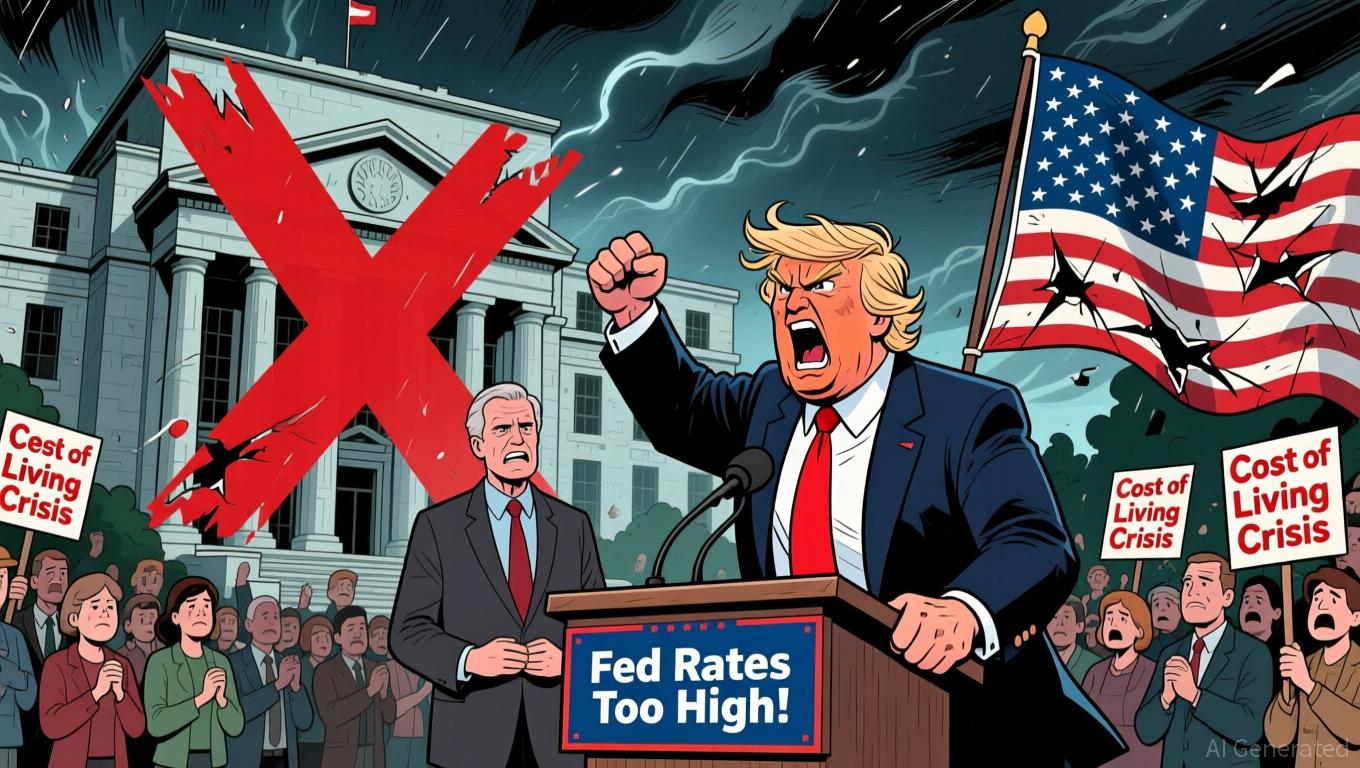Stablecoin Surge Compels Basel to Address Regulatory Inflexibility
- Global regulators, led by the Basel Committee, face pressure to revise strict 1,250% capital requirements for stablecoins as their role in institutional finance expands. - The U.S. Fed, Bank of England, and EU reject current rules, citing impracticality, while stablecoins like USDT/USDC now underpin regulated crypto derivatives and yield products. - Basel chair Erik Thedéen acknowledges the need for a "different approach" to risk-weighting stablecoins, which now enable institutional access to crypto mark
Global banking regulators are reconsidering their tough capital rules for digital currencies as the stablecoin sector experiences rapid growth, with the Basel Committee under increasing pressure to adjust regulations that have largely kept banks out of the crypto space. The committee's existing policy, which
The Basel Committee's uncompromising stance has met with open opposition from leading economies. Both the U.S. Federal Reserve and the Bank of England have indicated they will not adopt the rules as they stand, with Federal Reserve representatives describing the capital requirements as "impractical" and "not grounded in reality"

The swift rise of stablecoins has challenged previous beliefs about their risks. Erik Thedéen, who chairs the Basel Committee, admitted in an interview with the Financial Times that the growth of stablecoins has been "quite significant,"
European regulators are also confronting the challenges posed by these developments.
The Basel Committee's 2022 guidelines, scheduled to be enforced in January 2026, are already being reconsidered. Thedéen stressed the importance of "rapid evaluation" to determine whether stablecoins—and, by extension, permissionless blockchains—should continue to carry the 1,250% risk weight or be reclassified. The decision will shape whether banks can join the next wave of crypto innovation, balancing progress with financial stability. For now, the gap between regulatory caution and the pace of market development remains wide, with the U.S. and UK
Disclaimer: The content of this article solely reflects the author's opinion and does not represent the platform in any capacity. This article is not intended to serve as a reference for making investment decisions.
You may also like
Trump’s Dispute with the Fed Highlights the Strain Between Political Influence and Central Bank Autonomy
- Trump publicly criticized Fed Chair Powell, threatening to fire him over high rates. - Bessent highlighted tariff cuts on food imports and proposed $2,000 rebate checks to address affordability. - The Fed’s independence faces political pressure as Trump’s economic agenda clashes with monetary policy. - Trump’s rhetoric underscores tensions between presidential authority and central bank autonomy ahead of 2026 midterms.

Bitcoin Leverage Liquidation Emergency: Fluctuations, Systemic Threats, and Routes Toward Stability
- October 2025 crypto liquidation wiped out $19B in perpetual futures, highlighting Bitcoin’s volatility and systemic risks. - Retail panic vs. institutional resilience as ETFs attracted $24B inflows amid retail selloffs. - Regulators focus on digital asset classification amid $73.6B in crypto-collateralized borrowing. - Experts split on recovery, with some forecasting $200K Bitcoin if ETF inflows and Fed cuts continue. - Market recalibration suggests long-term opportunities amid evolving dynamics and risk
Nordic investors look for reliability in 21Shares’ physically-backed cryptocurrency ETPs
- 21Shares AG launched six new physically-backed crypto ETPs on Nasdaq Stockholm, expanding its Nordic offerings to 16 products. - The ETPs provide diversified exposure to major cryptocurrencies and index baskets, eliminating custody risks through full collateralization. - With $8B AUM and a focus on regulatory compliance, 21Shares strengthens its leadership in institutional-grade crypto access across Europe. - The expansion aligns with growing Nordic demand for transparent digital asset solutions amid int
